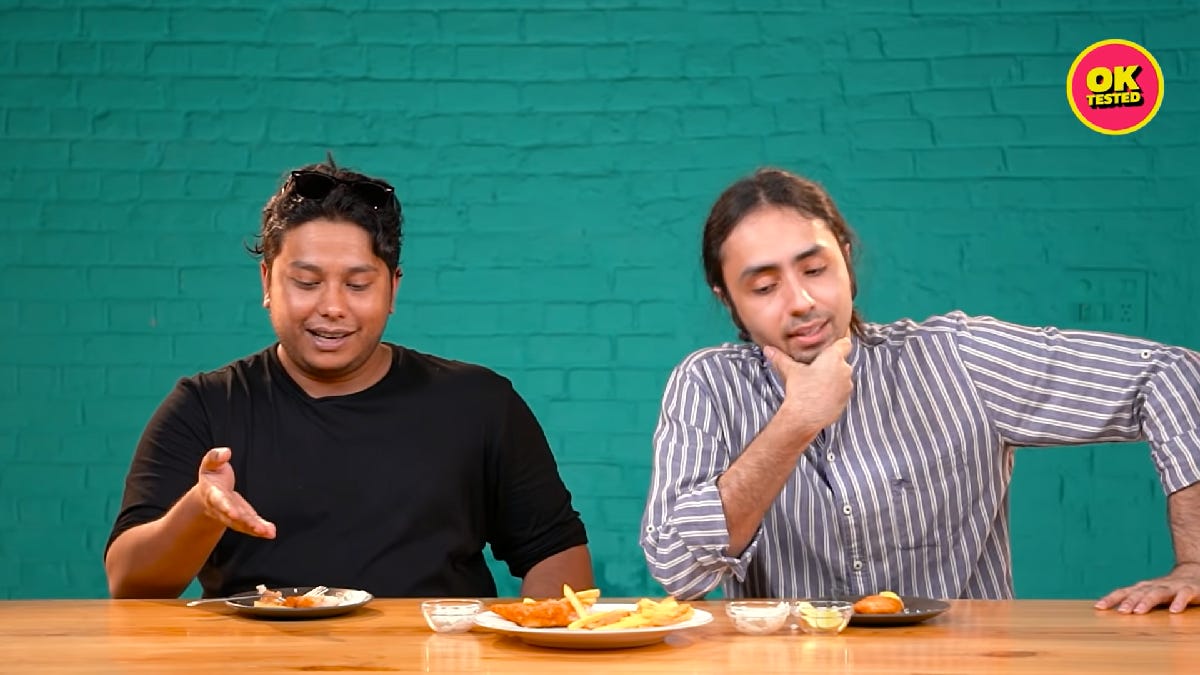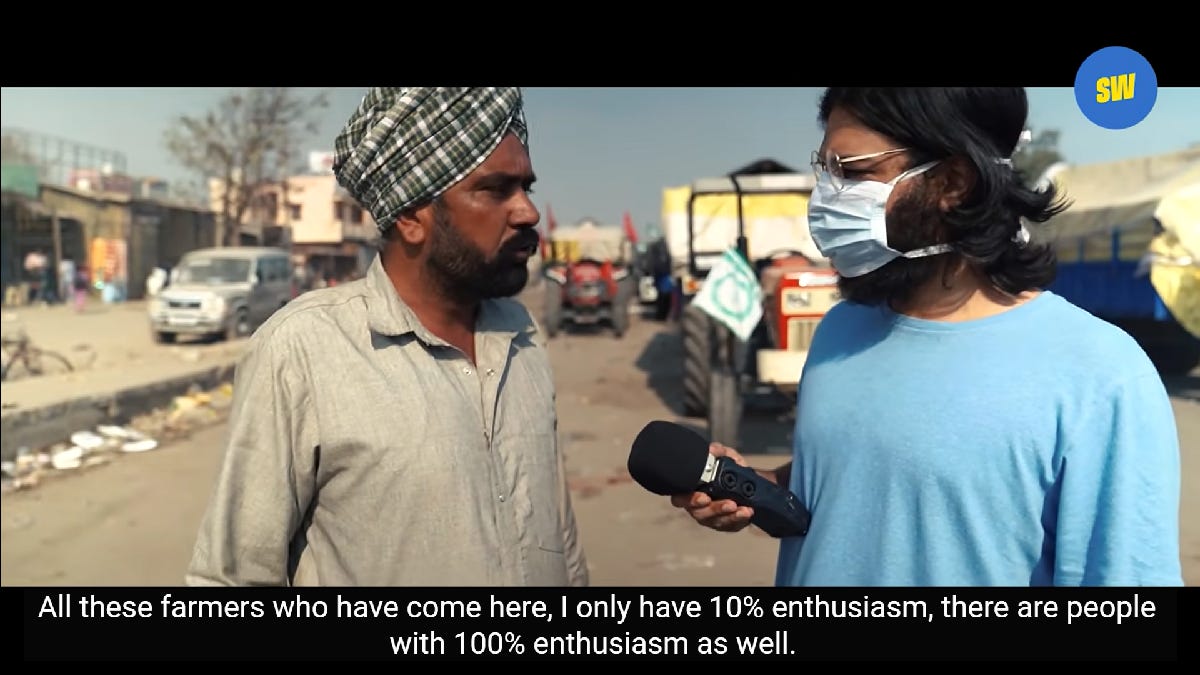How ScoopWhoop became one of India’s most viral publishers
The BuzzFeed-like site has built two popular channels on YouTube, one of which serves as a counterbalance to partisan TV news.
Welcome! I'm Simon Owens and this is my media newsletter. You can subscribe by clicking on this handy little button:
Scan the homepage for ScoopWhoop, and it doesn’t take long to notice its similarities to BuzzFeed. Most of the articles have a pop-culture bent and are formatted as listicles. Here’s a sampling of headlines:
12 Pop-Culture Inspired Costumes From 2021 You Need To Try This Halloween
10 Times Gunther Was The Funniest Character On FRIENDS Without Saying A Word, We'll Miss You Legend
How Many Of These Top-Rated Amazon Prime Video Originals Have You Watched?
The site isn’t an exact clone of BuzzFeed, however. There are two key differences: just about every writer for ScoopWhoop hails from India, and the vast majority of its content focuses on Indian-related topics. Here are a few more headlines:
Can You Tell Which Of These 16 Words We Use Every Day Are Urdu Or Hindi?
Little Boy Salutes A Soldier At Bengaluru Airport, Heartwarming Video Goes Viral
Who Is Sharvari Wagh? Here’s Everything To Know About The ‘Bunty Aur Babli 2’ Actor
Founded in 2013 by several colleagues at a marketing agency, ScoopWhoop has not only become one of India’s most viral publishers, but its YouTube videos also serve as a vital counterbalance to the highly partisan shouting matches that dominate the country’s TV news. Over the past eight years, it’s raised millions of dollars of investment, amassed an audience of 100 million users, and built a robust brand advertising business. Earlier this month, it was acquired by Good Glamm Group, which sells direct-to-consumer beauty products.
How did ScoopWhoop evolve from a simple BuzzFeed clone to one of India’s biggest digital publishers? Back in April, I interviewed two of its top executives about the site’s origin stories, its expansion into video, and its monetization strategies.
Let’s jump into my findings...
Founding a company in incognito mode
ScoopWhoop was born out of a night of drinking in a New Delhi apartment. Several marketing professionals, most of whom worked at an agency called Dentsu Webchutney, were discussing the prevalence of “listicle” websites and wondered how difficult it would be to create a viral listicle of their own. The conversation led to the launch of a simple Wordpress site and a few listicle articles the group brainstormed together.
One of those articles — an imagining of which Indian actors could be cast as Game of Thrones characters — exploded on Facebook. “We put it up on our Facebook pages, and a couple friends of ours put it on their pages,” said co-founder Rishi Pratim Mukherjee. “It basically just took off from there, spreading like wildfire through our friends’ circles on Facebook.” When the group returned to work the next week, they were stunned to see ScoopWhoop on the computer screens of several colleagues, especially since their names didn’t appear anywhere on the website. “We didn’t have official permission to launch it. We actually did this in incognito mode for about three to four months before we were caught.”
One day, the ScoopWhoop founders received a text message from Siddharth Rao, the CEO of Dentsu Webchutney. “He went to whois.com,” said Mukherjee. “We were naive enough not to mask our domain origin.” For about five minutes, they all thought they were about to be fired, but on the call Rao took an immediate interest in the website’s performance. “We showed him our Google Analytics dashboard, and when he saw the pageviews, the kind of engagement we were getting while bootstrapping it in the evenings after work, he was taken aback. He didn’t know that we were operating at that kind of scale without any distribution or branding. That’s when he basically told us that this is something that can become a full fledged business, but we’d have to do it full time.” Rao was telling them they should quit their jobs at his agency. He also offered to invest in the company.
Freed from their day jobs, the ScoopWhoop team was able to ramp up article production and ride a wave of exponential Facebook traffic. “This was the time when Facebook was actually making huge bets in the publishing space in terms of trying to get big and new publishers on board,” said Mukherjee. “Their algorithm was very publisher friendly, and because we were the first people to do millennial content in India, we rode that Facebook wave in 2013, 2014, and we can attribute a lot of our initial velocity to Facebook during that time.”
Mukherjee readily admits that ScoopWhoop content back then wasn’t very sophisticated. “We initially only had about three people writing articles, and we focused on content that didn’t require a lot of in depth or journalistic research.” Their early articles fell under a category Mukherjee referred to as “identity pieces.” He gave the example of an article titled “X things only people with glasses would understand.” If the author could accurately nail several common traits among those who wear glasses, then the article had a high likelihood of being shared by that subculture.
Obviously, ScoopWhoop wasn’t the only publisher to stumble upon these insights. The mid-2010s are littered with the carcasses of long-forgotten websites that leveraged Facebook’s free traffic, only to fall into obsolescence the moment the social giant changed its Newsfeed algorithm. Luckily for ScoopWhoop’s founders, they saw the writing on the wall before Facebook made its pivot. “We understood just doing light hearted pieces that trend for a day or two before dying out would end up in failure,” said Mukherjee. ScoopWhoop needed to build brand recognition, and it couldn’t do it with just listicles. “What we did is we hired a video team and started investing in video content. We hired a team of journalists to produce content that was more newsy in nature. That was how the identity of ScoopWhoop started to grow.”
Expanding into video
ScoopWhoop didn’t see the instantaneous success in video that it had experienced with its listicle content. It started out with situational sketch comedy — having people act out common experiences within Indian culture. Examples include:
Some of these videos went viral, but most struggled to find an audience. “We realized it was a space we couldn’t win, because there were other players in the market that beat us to it,” said Mukherjee.
ScoopWhoop quickly phased out its fictional video content and doubled down on nonfiction. It continued to experiment with a wide range of video formats, and in 2017 it ended up launching two separate video channels, both with vastly different purviews.
The first channel is called OK Tested and is the light-hearted of the two. It focuses entirely on lifestyle content and features a number of hosts who try out different products, foods, and cultural experiences. Recent episodes include:
These videos have the look and feel of reality TV shows, with repeatable formats and recognizable hosts. This allowed entire fan bases to sprout up around its series, and Mukherjee told me that many of the anchors have since become recognizable celebrities. The channel now has 1.42 million subscribers and 460 million views. An additional 700,000 follow it on its Facebook page.
The second channel is called Unscripted, and it’s staffed mostly with journalists and documentary filmmakers. Whereas OK Tested is light-hearted, Unscripted focuses on serious journalism. Its most common format involves sending a host to large events to conduct in-person interviews with those involved. A video published in December 2020, for instance, takes place at one of the massive farmer protests that have blanketed the nation ever since Prime Minister Narendra Modi pushed through legislation that affected crop sales.
Over the video’s 37 minutes, the host interviews dozens of farmers, some of whom traveled hundreds of miles to attend the protest. The video has over 2.6 million views and 232,000 likes. The Unscripted channel itself has amassed 1.4 million subscribers and 117 million total views.
Mukherjee told me that Unscripted has been embraced as a welcome counterbalance to the country’s broadcast news. “TV journalism is highly bastardized,” he said. “It completely toes the government narrative, and primetime news has become a shouting match. Most prominent TV anchors — who 12 years back did good solid journalism — have moved on to creating these large studio debates where they call 10 to 15 people to discuss a sensationalist topic, and everyone just starts shouting at each other.”
Unscripted mostly does away with pundits entirely, preferring instead to interview first-hand sources. “As far as viewers are concerned, they definitely hold us up as an example of what journalism should be,” said.Mukherjee. “If you go to any video on our Unscripted page and check out the comments, one theme that all users are commenting on is the manner in which we cover our stories. They always compare us to TV news.”
Monetization
Like BuzzFeed and other millennial-focused publishers in the U.S., ScoopWhoop prides itself on its younger audience, and it touts its core 18 - 35 demo when pitching advertisers. Meghana Bhat, its head of growth and partnerships, told me that the company’s primary business model is selling branded content to Indian companies.
In September 2020, for instance, Unscripted partnered with Gillette to produce a video titled “Living Through The Pandemic | A Barber's Story.” It’s a six-minute mini documentary centered on the life and work of a single barber. It has 750,000 views. “What we try to do is we look at branded content as yet another episode of our regular programming,” said Bhat. “It has to fit with what we do as regular programming for it to work and deliver what the brand needs.”
In our interview, I pointed out that BuzzFeed and other digital publishers have since diversified beyond brand advertising, expanding into areas like ecommerce and producing shows for TV streaming platforms. Did ScoopWhoop have similar ambitions?
Mukherjee said ScoopWhoop hasn’t signed any major Netflix deals, but it has produced some streaming OTT video. “We do create white labeled content, not only for OTTs, but other apps and brands. We partnered with Zomato, the Yelp of India, and created an eight-episode show for them. We partnered with Flipkart to create original video on its app.” As for ecommerce content, they hadn’t produced much. “Affiliate marketing is a very fledgling market in India. It’s not really big enough.” It’s worth noting, however, that I conducted this interview back in April. In the wake of the Good Glamm Group acquisition, its founder claimed that ScoopWhoop would “accelerate the Group’s foray into building a content-to-commerce platform for the burgeoning male grooming and personal care segment.”
ScoopWhoop also launched a subscription product earlier this year that’s tied to its Unscripted programming. Subscribers get early access to videos before they show up on YouTube, and the community votes on topics it wants the hosts to cover.
Mukherjee touted this move as ScoopWhoop’s attempt to embrace a post-Facebook world where media outlets control their distribution. “Whereas our first chapter was to create content and distribute it through large social platforms like Facebook and Google, the challenge is we don’t own our audiences the way Facebook or Instagram does.” While he recognized that outlets like ScoopWhoop could never achieve the kind of scale that’s found on a large platform, it’s still worth it to form that direct connection with the site’s audience. “We want to build a loyal community that we can monetize in a much stronger manner than what we’ve been doing so far,” he said. “I think that’s something missing from our mix.”
Do you like this newsletter?
Then you should subscribe here:
Simon Owens is a tech and media journalist living in Washington, DC. Follow him on Twitter, Facebook, or LinkedIn. Email him at simonowens@gmail.com. For a full bio, go here.




